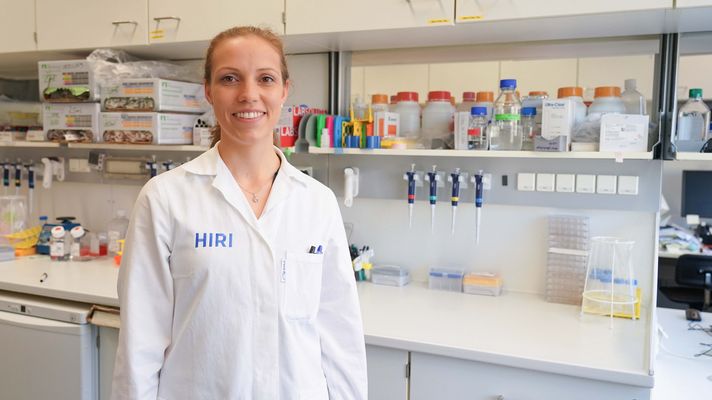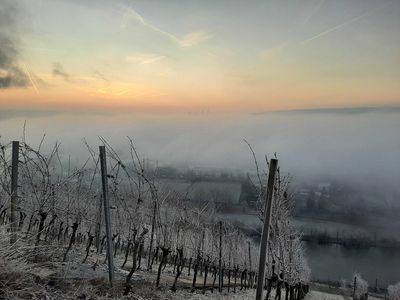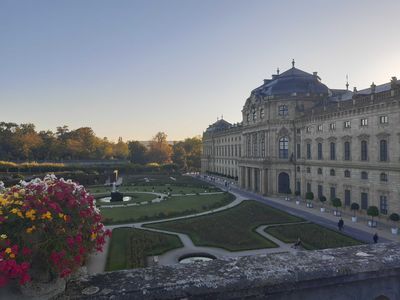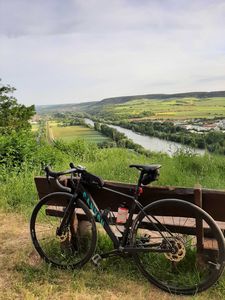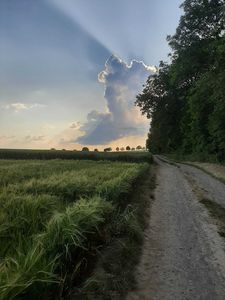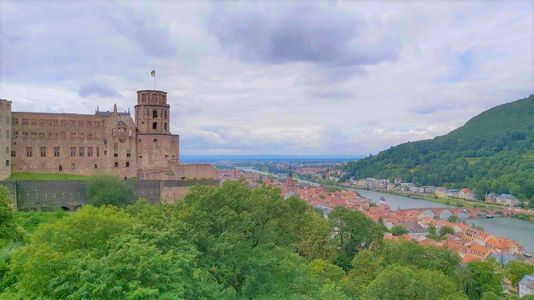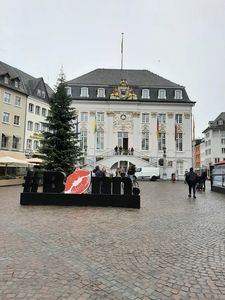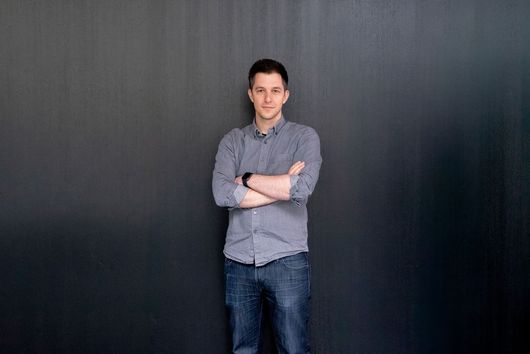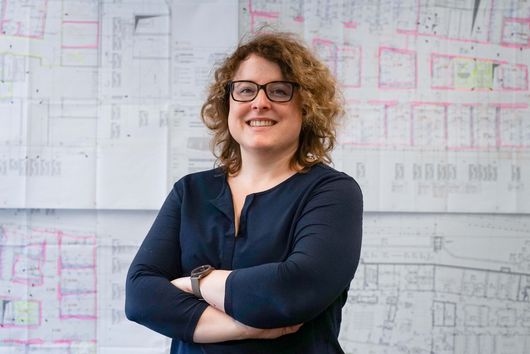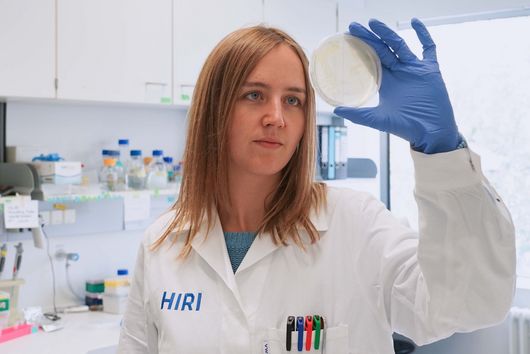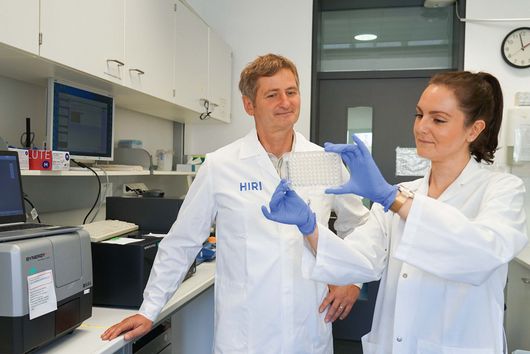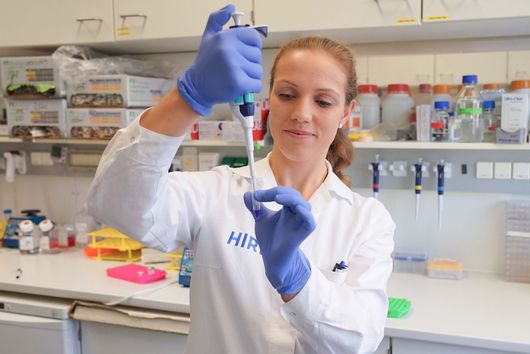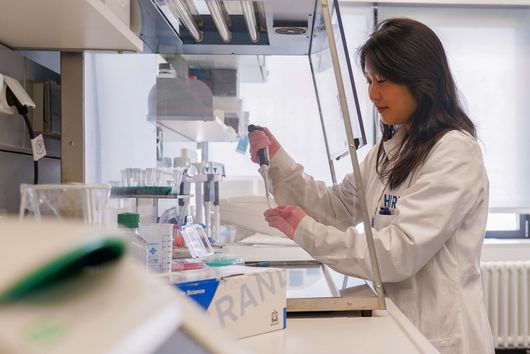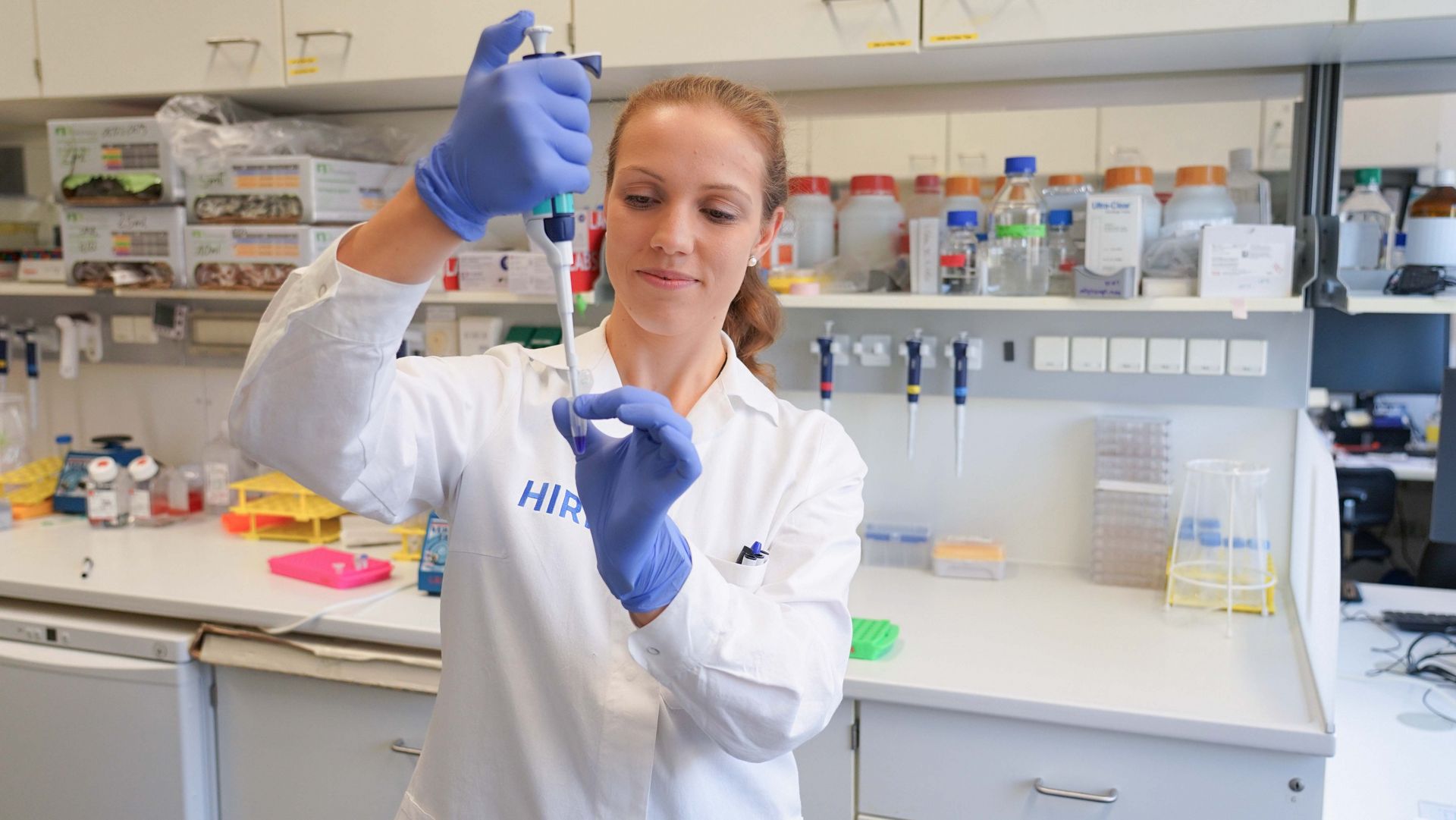
The chemistry of life
Lina Günter has been a PhD student at the Helmholtz Institute Würzburg (HIRI) since 2021. As part of the HIRI graduate program “RNA & Infection”, she is researching the respiratory syncytial virus (RSV). However, it was already some time ago that she discovered her passion for biochemistry.
“Biochemistry is about understanding how everything interacts at the molecular level. It's incredibly exciting,” says HIRI PhD student Lina Günter. Even in school, chemistry and biology were among her favorite subjects. “Chemistry fascinated me from the very beginning, partly thanks to my amazing teachers, who sparked my curiosity for the realm of atoms and molecules. In biology, on the other hand, I have always been intrigued by the way biochemical processes take place, interlock and ultimately make up our complex bodies,” she recalls. While still in high school, Lina had the opportunity to experience laboratory work first-hand during an internship at the Department of Microbiology at the University Hospital in Bonn. “After graduating from high school, I decided to continue my education by studying biochemistry at the University of Heidelberg. Especially in the master's program, we had a great deal of autonomy due to the limited required courses and the large number of elective ones. There was also a strong emphasis on hands-on work, so I was able to spend a lot of time in the lab,” she says. From novel RNA and protein modifications in bacteria to epitranscriptomics in bladder cancer and giant viruses affecting unicellular organisms, Lina got to know a wide range of topics during her time in various labs in Heidelberg, including the German Cancer Research Center (DKFZ) and the Max Planck Institute for Medical Research.
An internship at a Heidelberg-based startup that provides analytics for the pharmaceutical industry gave her insight into non-academic research. “I really enjoyed working in an industrial environment. I learned a lot, especially regarding the structuring and documentation of my experiments. I was also able to gain experience using new equipment that I was not familiar with from the academic setting, such as an analytical ultracentrifuge,” she recalls. For her master's thesis, Lina went back to university, or more specifically, the University Hospital in Heidelberg, where she investigated the influence of an anticancer drug on RNA decay. And even after that, she wasn't done with academic research. “I wanted to keep doing research in the lab, so a PhD was the obvious next step. Besides, having a doctorate gives you better career opportunities later on,” she states. So it was clear to Lina that she wanted to obtain a PhD.
A spotlight on RNA
By this time, she was already familiar with the Helmholtz Institute for RNA-based Infection Research (HIRI) in Würzburg. “Since I had dealt with RNA-binding proteins in my master's, the HIRI was a perfect fit,” says Lina. She also appreciated the institute's focus on infections: “You know what you are researching for. Your own results can have a real impact on many people's health, especially when it comes to developing novel antiviral drugs.”
Now a PhD student in Mathias Munschauer's lab, Lina studies the respiratory syncytial virus, or RSV. “The virus is very common; almost every child under the age of two will be infected at least once. Even after overcoming the infection, it is possible to contract RSV again and again throughout one's life. And although the virus sometimes causes severe infections in newborns, there is currently no specific antiviral therapy,” Lina explains. Through her research, she aims to understand how the virus takes advantage of host cells. She is particularly interested in the human proteins that bind to the viral RNA. “I want to find out which proteins play a role in the replication of the virus—and whether they might be targets for potential therapies,” Lina explains.
Music: Invincible by Frametraxx
One of the things she values about HIRI is the good equipment. “Whether qPCR, FACS or sequencing—we have a lot of equipment for different applications,” says Lina. But she also likes the thematic focus of the institute, which puts RNA at the center and brings together what can be very different fields of research. Lina also appreciates the team spirit at the institute and in her group in particular: “My colleagues are incredibly kind and supportive, we often collaborate to answer questions and tackle challenges. Of course, we all work on our own projects, yet we also support each other when, for example, complex experiments are pending.”
She moved from Heidelberg to Würzburg in order to become part of the HIRI graduate program. “The two cities have a lot in common, so I settled in quickly. Of course, this was also due to my research group. My colleagues made me feel at home very quickly,” she notes. What she likes most about Würzburg is the Hofgarten, the court garden of the Residence: “It is always nice to take a walk there. No matter who is visiting me, a tour of the Hofgarten is on the agenda.” Otherwise, Lina likes to spend her spare time on her racing bike, which she uses to explore the area around Würzburg, or running. “When I jog through the vineyards in the morning and watch the sun rise over the city, it's really wonderful.” That's why Lina's tip for newcomers to Würzburg is to experience the sunrise in the vineyards.

